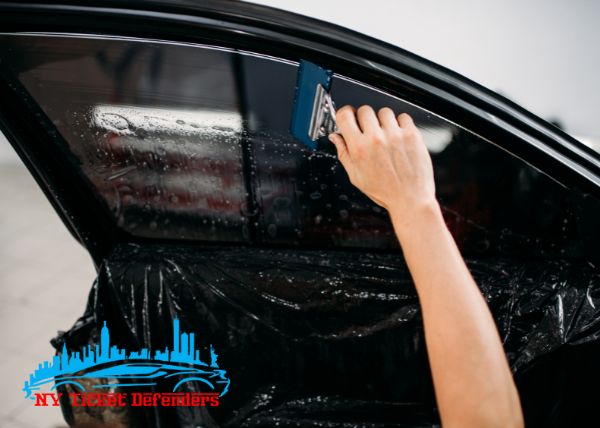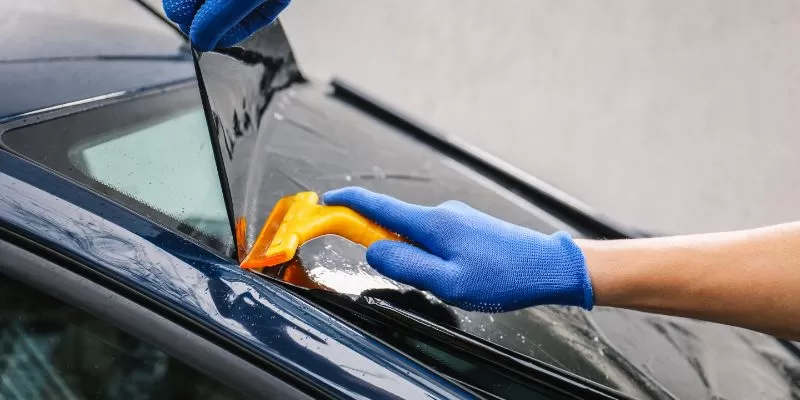The Science Behind Car Window Tinting and UV Ray Security
The Science Behind Car Window Tinting and UV Ray Security
Blog Article
Window Tinting Laws and Standards: What You Need to Know Before Tinting Your Car
Prior to waging home window tinting for your lorry, it is essential to acquaint on your own with the varied laws and guidelines that govern this method across various states. These guidelines dictate the allowable levels of color darkness, typically gauged by visible light transmission (VLT) percents, and include particular terms for front windshields focused on making sure roadway safety and security. In addition, specific jurisdictions might supply clinical exceptions for individuals with certifying problems. Understanding these complexities can conserve you from possible lawful ramifications, yet what are the details policies in your state?
Overview of Window Tinting Rules
Home window tinting regulations are often subject to variation throughout various territories, showing local regulations and security considerations. These regulations dictate the permitted degrees of tint darkness and reflectiveness on automobile windows, making certain that vehicle drivers preserve adequate visibility while additionally safeguarding versus hazardous UV rays and heat.
Many regulations identify window tinting based upon the Visible Light Transmission (VLT) percent, which shows the quantity of light that can pass through the home window. Generally, reduced VLT portions indicate darker colors. Legislations often set apart in between the front, side, and back home windows, with stricter limitations put on the front windscreen to improve security for both the chauffeur and other road customers.
Conformity with window tinting regulations is important, as violations can result in fines, mandatory elimination of the tint, and potential rises in insurance coverage costs. It is crucial for car owners to familiarize themselves with neighborhood regulations before continuing with window tinting setups.
State-by-State Color Regulations
Recognizing the particular window tinting regulations in each state is important for vehicle owners seeking to follow the law. Each state in the united state has developed its own set of rules regulating home window tinting, which can differ dramatically. These regulations often dictate the permitted levels of tint darkness, the kinds of home windows that can be tinted, and any medical exceptions that may apply.
For instance, states like California have strict limitations on color darkness for front home windows, while others, such as New Mexico, might enable darker tints. Furthermore, certain states mandate details visibility portions for numerous windows, consisting of the windscreen, front side home windows, and rear home windows. It is critical for cars and truck owners to acquaint themselves with their state's regulations to avoid potential fines or fines.
In addition, some states might call for a qualification sticker to be put on tinted home windows, showing compliance with state legislations. Failing to stick to these policies not only takes the chance of lawful repercussions but can also affect safety and security and visibility while driving. For that reason, lorry owners ought to perform extensive study or seek advice from neighborhood authorities to make certain complete understanding and conformity with state-by-state tint policies.
Allowed Tint Levels and Types
Several vehicle owners might be stunned to discover that allowed tint degrees and kinds vary widely throughout various states. Each state has developed its own regulations concerning the permissible darkness and reflectivity of home window tint, commonly measured by Visible Light Transmission (VLT) portions. VLT refers to click over here now the amount of light that can pass with the tinted home windows; thus, a lower portion indicates a darker tint.

Additionally, the kinds of tint materials permitted can differ, with some states prohibiting metallic or mirror-like finishes. It is essential for lorry proprietors to familiarize themselves with their state's certain regulations to make certain compliance. Non-compliance can cause penalties, required elimination of the color, or other lawful repercussions, making it crucial to comprehend these guidelines before waging setup.
Medical Exceptions for Tinting
While not all states give allowances for medical exceptions relating to window tinting, those that do identify the requirement for specific people to improve presence and comfort as a result of clinical problems. Different medical conditions, such as lupus, skin cancer, and specific eye conditions, can provide individuals especially conscious sunshine. Consequently, these individuals may need darker tints to secure themselves from harmful UV rays and glow.

It is very important to keep in mind that despite a clinical exception, there might still be restrictions on the level of color permitted. Conformity with state legislations guarantees that individuals are both secured and within legal limitations. Those thinking about medical exceptions need to call their neighborhood Department of Electric motor Cars or equivalent authority to recognize the demands and treatments required to look for an exception effectively.
Fines for Non-Compliance
Failing to adhere to window tinting laws can lead to substantial penalties, which vary by state. Police are encouraged to provide citations for automobiles that do not abide by the defined tinting regulations. These charges try this out normally include fines, which can vary from moderate quantities to several hundred bucks, depending upon the seriousness of the offense and the state concerned.
In some territories, duplicated offenses might result in intensifying fines or additional penalties, such as obligatory check these guys out court appearances. Additionally, non-compliance may require the removal of illegal tinting, frequently at the owner's expenditure. In severe instances, regular offenders may face suspension of their car enrollment until compliance is attained.
Additionally, insurance implications may develop from receiving numerous citations for home window tint offenses. Insurance firms may view such violations as an indication of riskier actions, potentially causing increased costs or problem in protection.
To prevent these penalties, it is crucial for vehicle proprietors to familiarize themselves with their regional home window tinting laws and guarantee that their lorry complies (Window Tinting). This aggressive strategy not just avoids legal ramifications however additionally advertises road security
Verdict

Many guidelines categorize window tinting based on the Visible Light Transmission (VLT) percentage, which shows the quantity of light that can pass with the home window. Compliance with window tinting policies is critical, as violations can result in penalties, mandatory elimination of the color, and prospective boosts in insurance premiums.Comprehending the particular window tinting laws in each state is vital for car owners seeking to comply with the legislation. These laws typically determine the allowable levels of color darkness, the kinds of home windows that can be tinted, and any kind of clinical exceptions that might apply.
For circumstances, states like The golden state have rigid constraints on color darkness for front home windows, while others, such as New Mexico, might enable darker tints.
Report this page